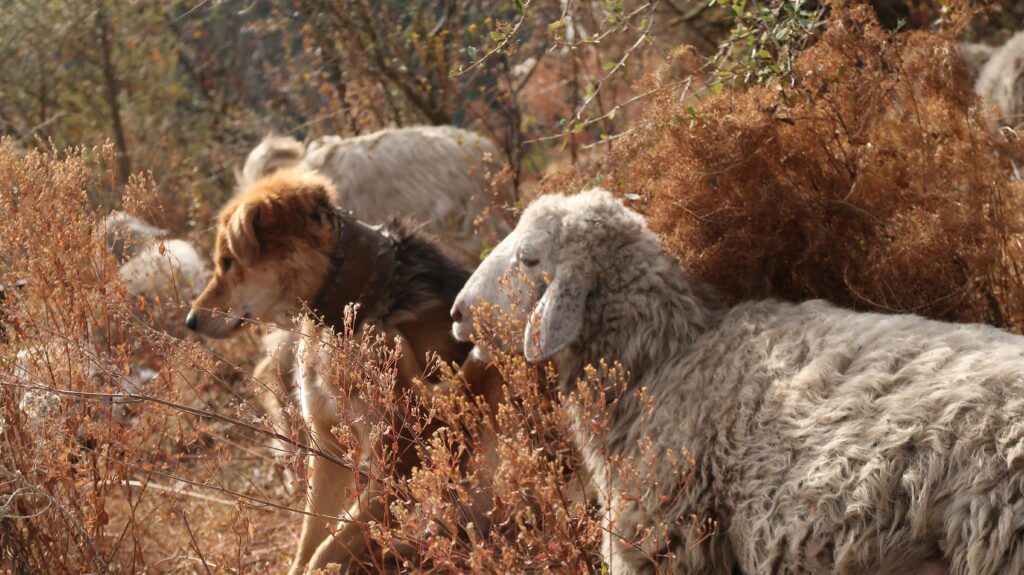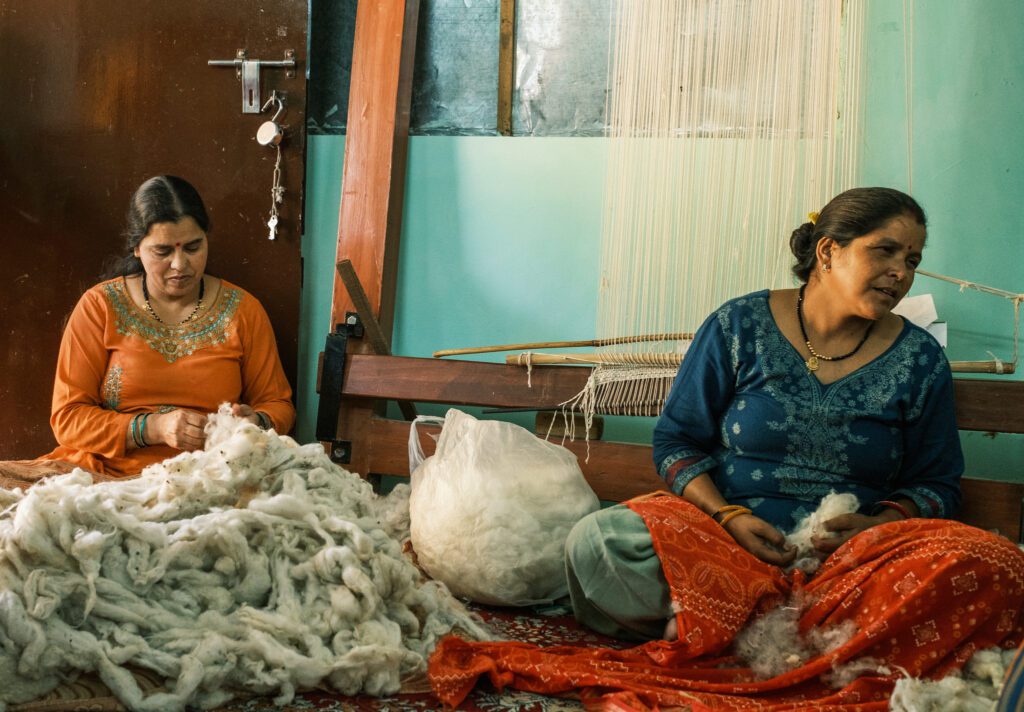Many Himalayan communities have a tradition of working with wool. Most of them are pastoralists who keep large herds of animals, especially sheep. While their dependence on animals for subsistence has diminished in recent years, wool and its products such as shawls, throws and carpets are still an important source of their income.
Bhotiyas and the Himalayan Wool
The Bhotiyas of Uttarakhand form one such community. In the past they lived in villages along the border-lands between India and Tibet, their main occupation being trade with Tibet. The men travelled to Tibet through mountain passes every year during the summer, taking grains, sugar, cotton and utensils and bartered these for salt, borax and wool, which they brought to India for trade. They kept large flocks of sheep which were used to carry loads between various markets. The women stayed in the villages, farmed small patches of land and worked with wool, making shawls, blankets and tweeds.

The situation changed in the early 1960s, when India’s border war with China led to a closure of borders, and trade with Tibet could not be continued. The loss of income from trade has forced Bhotiya people to look for other opportunities. As Bhotiya men are experienced shepherds, many continue to keep large flocks of sheep. The women continue to use their skills to make and sell Himalayan woolen products.

The women of the Jad Bhotiya community of Dunda and Bagori villages have been especially adept in making this change. Most of them work with wool and make products which they sell in their villages, and in the Uttarkashi market. We at Himalayan Weavers have a long association with the Jad Bhotias and have benefitted greatly by working closely with them.
While some Jad families have large flocks of sheep and use their own wool, others buy it. The Himalayan wool-called Harsil Cross-though not very soft, is ideal for making blankets, tweed and carpets. The wool is hand-washed and carded before it is hand-spun to make yarn. They use a foot pedal operated spinning wheel called Bageshwari charkha to spin. The charkha was introduced more than 50 years ago and has completely replaced the drop spindles used in the past.

Usually, this yarn is not dyed, though various shades of grey are obtained by blending black, brown and white wool at the time of carding. The yarn is given to weavers who produce shawls, throws, tweeds and other products.
Their wool business has grown rapidly during the last decade. Apart from villagers in the neighbourhood, their main customers are pilgrims and tourists travelling to Uttarkashi, Harsil and Gangotri. With the current large increase in pilgrim numbers, there has been a rapid rise in the demand for woolens made by Jad Bhotias. Most families are busy throughout the year, working to meet this demand, and Dunda and Bagori have emerged as the most important centres of hand-made woolen products in the Central Himalayas.

Our association with Jad Bhotiyas goes back almost two decades. In fact, our main reason for setting up Himalayan Weavers was to help the Bhotiya women to find new markets for their products. Over the years our relationship with them has become deeper; we still sell throws they make to our designs and they spin wool for many of our products. This very special handspun wool adds great value to our shawls stoles and scarves.


